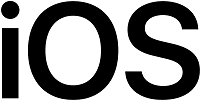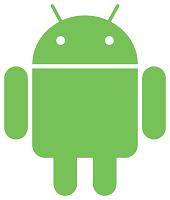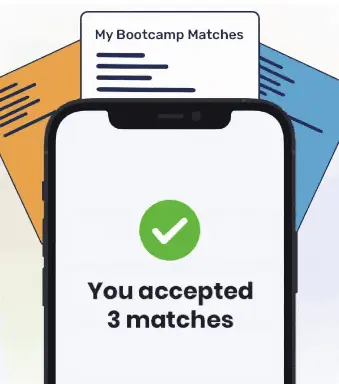Learning how to code an app can be simple. All you need is an idea and the right tools. Coding an app involves having an idea, designing the app, testing it, and releasing it. It can be done in any number of ways, depending on your platform and skillset.
Throughout the app development journey, you will need to have fundamental programming skills and understand several core concepts of mobile application development. To learn more about how to build mobile apps, read through our guide as we detail the length, cost, and required skills of the app development process.
Key Takeaways
- Before you start coding your first app, you should have mastered a coding language, gotten familiar with app development tools, and learned about app testing.
- For iOS app development, Objective-C and Swift are commonly used languages.
- For Android app development, Java is the official language, but other languages like Python and Kotlin can also be used.
- Useful tools for learning how to code an app include AppyPie, ImageX, IntelliJ IDEA, Flutter, and Xamarin.
- App design, including user interface and user experience, is crucial for a user-friendly experience.
How to Code an App for Beginners
According to Consumer Affairs, “Today, more than nine out of 10 of all cell phone owners have a smartphone.”1 This proves that there is an enormous market for your app if it hits the Google Play Store and the App Store. It’s not an easy process, but it’s certainly possible to learn how to code an app as a beginner.
App development is a satisfying and potentially lucrative skill. This guide on app development for beginners will help you get started on the right track. Discover more about coding Android and iOS applications below.
The Basics of Mobile App Development
Before we get into the basics of app development and provide a step-by-step guide for creating an app, we need to set the stage for the app development process. Like most other kinds of software development, building a mobile app requires that you have programming knowledge. There are a couple of different ways you can approach this.
Arguably, the best place to start is deciding which platform you want to work on, with the two major options being Android and iOS. This matters because where your app will run will determine the programming language and environment you’ll be working in.
There are other fundamentals that you should familiarize yourself with before you set sail on your first app coding journey. Learn more about the basic steps of mobile app development for beginners below.
- Master a Coding Language. There is a wide range of coding languages out there. However, many of them have different core purposes. App developers typically have coding skills in programming languages like Swift, Java, C++, and HTML5.
- Get Familiar With App Development Tools and Environment. Even professional developers rely on specialized tools to supplement their app development skills. Get familiar with tools such as Android Studio, React Native, BuildFire, and more.
- Design For Functionality. Creating an app for the first time, you may want to focus more on functionality than aesthetics. App design is a learning process, so test out different things to see what works best.
- Write Code that is Solid. One of the most essential parts of the app development journey is to make sure that the source code is free of errors. You can also use a mobile code editor to assist you with this step.
- Test Your App and Make Improvements. You can now bring your app to life and test its functionality. You may want to gather actual user feedback within the app so you can learn about any glitches.
How Long Does it Take to Make an App?
The length of time it takes to create an app varies greatly. If you’re making a simple app, it can take approximately 2-4 months, according to UpTech.2 However, if you’re creating a more complex app, it could take up to a year or more.
How to Code Applications for iOS

Apple products, such as iPhones and iPads, use an operating system called iOS. Developers usually build apps for this platform using a coding language called Objective-C, which is one of many C variants. Apple chose this language as its primary code, so it’s essential to master it if you want to learn how to code an iOS app.
You’ll likely need to use some other programming languages when learning how to build an iOS app, such as:
- Swift
- HTML5
- C#
- C++
- Java
In addition, Python is another popular language and is renowned for being easy to learn. It’s a common tool for building modules, libraries, and backend tasks like storing data for the iOS platform.
How and when you use each of these languages depends on what you intend to do with your app. Many of these programming languages are used for Android development as well. For learning how to develop iOS apps, we think it’s best to start with Objective-C or Swift.
iOS Coding Languages
In this section, we will discuss five programming languages that are essential for learning how to code an app for Apple devices. These languages will help you bring your ideas to life and get your creation into the App Store.
| Programming Language | Who Uses Swift? | Learning Difficulty |
| Swift | Apple, LinkedIn, Uber | Easy |
| HTML5 | Google, YouTube, Amazon | Moderate |
| C# | Accenture, Microsoft, Trustpilot | Easy |
| C++ | Adobe, Evernote, Meta | Hard |
| Java | Airbnb, Netflix, Spotify | Easy |
How to Code Applications for Android

When learning how to code an app for Android devices, the first thing you should know is that the official language of Android is Java. As an old and established object-oriented language, Java is stable and has a vast community of users you can turn to for advice. Plus, one of the most popular software tools for building Android apps, Android Studio, uses Java.
Additionally, many developers choose to code their apps with C and C++. The technical requirements of your app will dictate which programming languages you choose to work with.
Thankfully, you can choose from many different languages when learning how to write code for Android devices and the Google Play Store. Android app development is flexible, and you can also code with other languages, like:
- Python
- Kotlin
- Lua
There are a lot of language options for Android development. While you’re not limited or required to use the extra languages, you can do so at your discretion. Favored coding languages shift constantly, so it’s best to do your research regularly.
Android Coding Languages
As mentioned above, you can choose from a wide range of programming languages when learning how to code your own app for an Android project. Depending on your app’s functionality preferences, one programming language may be better than another.
In addition, the language you choose to work with will likely be influenced by your level of coding skills. Learn more about several languages that professional app developers use for the Android system below.
| Programming Language | Who Uses Swift? | Learning Difficulty |
| Python | Google, IBM, PayPal | Easy |
| Kotlin | Pinterest, Coursera, Uber | Easy |
| Lua | Amazon, Mastercard, TikTok | Easy |
Other Useful Tools for Learning How to Code an App
Apart from the above considerations, there are many useful tools for app programming, especially for beginners. In fact, some app-building software requires no coding knowledge. Some helpful app creation tools when learning how to program an app include:
Appmakr
Appmakr is one of the most popular platforms for creating a content-based application. Most of Appmakr’s services are free, and it simplifies the process of creating an app for users with little to no prior coding experience.
This app creation tool can be used for designing apps for the Google Play Store and Apple App Store. In addition, it acts as a drag-and-drop visual designer and offers affordable monthly subscription plans.
AppyPie
AppyPie is one of the most popular platforms for creating a content-based application with no coding knowledge.
This app builder can be used for designing functional apps for the Google Play Store and Apple App Store. In addition, it acts as a drag-and-drop visual designer and offers affordable monthly subscription plans.
ImageX
ImageX is a command-line tool, developed by Microsoft, that enables capturing an entire hard drive as a Windows Imaging Format file.
IntelliJ IDEA
IntelliJ IDEA is an integrated development environment (IDE) specifically tailored for writing Java and Kotlin. This IDE provides app builders with everything they need out of the box, including built-in developer tools.
Flutter
Flutter is an open-source user interface software developer kit for Google. This toolkit is used to build native apps for Android, the web, or desktop with only one codebase. Beginners can learn to use Flutter through instructional videos, codelabs, manuals, and more.
Xamarin
This is Microsoft’s cross-platform development platform, which extends the older .NET platform. This makes it easy to build an app for a variety of mobile environments. In addition, this is a free, open-source app creation tool that allows users to work on coding apps for hybrid apps: Android, iOS, Windows, macOS, and more.

"Career Karma entered my life when I needed it most and quickly helped me match with a bootcamp. Two months after graduating, I found my dream job that aligned with my values and goals in life!"
Venus, Software Engineer at Rockbot
App Design
Another important consideration is the design and app functionality. User Interface (UI) and User Experience (UX) design are critical elements to the quality, usability, and, ultimately, the marketability of an app. No one wants to use an app that isn’t user-friendly.
While it’s possible to learn coding, graphic design, and UX design to build an app, you may want to consider hiring a dedicated UX/UI designer. You can hire a UX/UI designer either as part of a company or as a freelancer.
How to Program an App: Step-by-Step
Now that you have a background on the tools and languages you will need, we can start discussing the steps for how to program an app. While there is no specific procedure for how to program mobile apps, the following is a good template if you’re working on your own:
- Find a good idea
- Create a soft design
- Create a prototype
- Create a hard design
- Build your app
- Go through user testing
- Publish and begin marketing
Find a Good Idea
There’s a good chance that if you’re already reading this article, you have some idea for an app. However, it’s important to start with an idea that will turn into a successful product.
The most successful products solve a problem, so ask yourself, “What problem will my app solve?” The problem you solve could be as simple as boredom and as complex as helping determine aerodynamic engineering solutions. Just make sure there is a need for what you’re producing with a bit of market research.
Understanding Your Market
You may be very excited about your idea, but it is important to take a deep breath and think about how it will fare in a competitive market. Conducting market research to assess the demand for your app idea is a crucial part of developing a successful application.
App Monetization
Do you want your app to generate revenue? There are multiple ways to do this. Take time to explore different options and decide if you want to feature ads on your own app, offer subscription plans, or list it for a certain price in the App Store. You will also need to do research on what an appropriate price is for your app.
Choose Your App Name
Naming your own app is something that can take more time than you may realize. To get started, think about what you want actual users to feel or imagine when they hear the name. Do you want the name to make the app self-explanatory, or do you want it to be more creative?
Select a Color Scheme
Establishing a cohesive color scheme that you can stick to will make the design process easier later on. Further, it will help your app appear more polished and professional. Different color schemes elicit varying feelings within users. As such, make sure you choose a color scheme that appropriately reflects how you want your users to feel.
Soft Design
When learning how to program a mobile app, many people get carried away with elaborate designs and quickly lose focus on their app’s purpose. To begin, come up with how your app will solve a problem. Think broadly: What features will your app have, and what tools will be needed to implement these features? What devices will it function on?
This is the time to determine the platforms, programming languages, and framework (if any) that will best suit your project. Remember to stay focused on your app’s purpose. This will make starting with a blank project more manageable.
Create a Prototype
Build an app that’s the absolute bare minimum version of your final design. Don’t worry about UI, UX, or non-essential features. When learning how to program mobile apps, you will want to work in small stages.
Your prototype should be a simple and clean proof of concept; it should show that the main, bare-bones concept of your app will work. This will be the kernel that you build your app on.
Hard Design
Now that you know your app will work, this is the time to determine exactly how your app will look. Consider what features it will or will not have and how it will look and feel to users. Write out your development plan and determine what order every remaining part of the app should be built.
This is the time to design or hire out the design for the UX and UI of your app. Think about your own knowledge of resources for app building. If you have basic knowledge of how to program applications, you may have to hire an expert to flesh out the advanced features or look for app creation tools that can help you.
Build Your App
While this is often the longest step, it’s the easiest to explain. Simply follow the plan you’ve made. You will likely encounter roadblocks and unexpected bugs, so feel free to modify your plan as you create your app. Learning how to program an app also entails trial and error, so be patient with yourself during this stage.
User Testing
Once you have a finished version 1.0, it’s time to put your app in someone else’s hands. Ask for honest criticism, and consider that criticism humbly. If needed, make changes to your app and try again until you have a product that actual users enjoy, and that you’re proud of.
You can ask your family and friends to test your app or release a beta version and generate general user feedback. After working hard on creating your own app, it may be hard to accept criticism. However, your app needs to be user-friendly for a diverse audience to succeed, so it is important to take input from a variety of people.
Publishing and Marketing
No one can buy and use your app if no one can find it or has never heard of it. Publish your app to the Apple App Store, Google Play Store, and any other marketplace for apps. Put together a marketing strategy that works for your product and your budget. After all, knowing how to program mobile apps is useless if you are not able to get the word out and attract users.
Learn How to Code an App By Doing
Learning how to create your own code can be daunting for beginners, but going at it alone is unnecessary. App creation platforms are a great way to simplify the app development process for even the most inexperienced users.
How to Code an App FAQ
Coding an app can be free, or it can cost hundreds of thousands of dollars. When considering how much it costs to program an app, it entirely depends on what features you want in your app. You can create a basic app with the help of open-source app creation tools for no cost at all.
You can build an app without any coding by using popular app creation tools and the use of AI. There is a variety of app-building software that requires no coding.
Yes, you can build an app for free using open-source app creation tools and AI. If you want to learn how to code an app for free, you can start with tools such as Flutter from Google and Xamarin from Microsoft.
Coding an app is somewhat difficult. However, there is a multitude of tools and resources out there to help beginners learn how to code an app. From online tutorials to app-building software, anyone can learn how to program applications today.
Sources
1 https://www.consumeraffairs.com/cell_phones/cell-phone-statistics.html
2 https://www.uptech.team/blog/how-long-does-it-take-to-make-an-app
About us: Career Karma is a platform designed to help job seekers find, research, and connect with job training programs to advance their careers. Learn about the CK publication.
